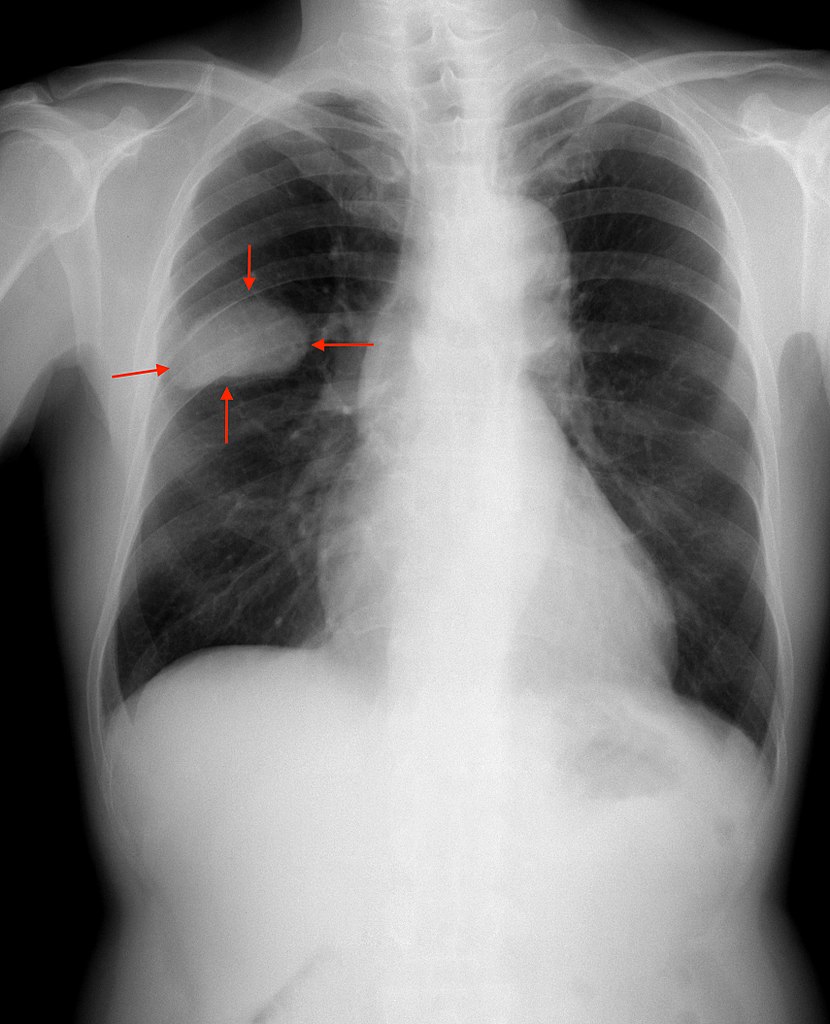Physics is frequently underestimated in the medical field, as the focus tends to be primarily on biology and chemistry. Nevertheless, physics holds immense importance in the biomedical domain and is indispensable for numerous medical advancements and technologies. Medical physics, which incorporates principles from physics into medicine, encompasses a wide range of concepts, including medical imaging, biomechanics, radiation, electricity, and magnetism.
Biomechanics, a field of study within medical physics, focuses on the mechanical properties of biological tissues and their interaction with external forces. It helps understand how forces and loads are distributed across the body’s joints and aids in designing implants and prosthetics that mimic natural joint functions. Elastic limits and tensile stress are important concepts in biomechanics, making the fusion of physics and biology integral to activities like yoga or Zumba.
This X-ray image on the left depicts a cancerous tumour affecting the right lung. Knowledge of medical biology and physics will help us understand such diagnoses better.

Physics is also important in radiation therapy, which uses high-energy radiation to shrink tumours. Radiation therapy uses high-energy radiation such as X-rays and gamma rays to break the DNA in the cancer cells. This requires a deep understanding of how radiation interacts with matter and how it can be precisely delivered to the target area, ensuring that it kills cancer cells while minimising damage to healthy tissue. Laser surgery, another medical procedure, utilises focused beams of light to remove or repair tissue. Physics is key to understanding how coherent light interacts with tissue and how to control the laser beam’s intensity and duration.
Physics principles are fundamental to the functioning of various medical devices. For example, pacemakers, defibrillators, and artificial limbs rely on electrical signals or sensors to regulate bodily functions or detect movement. Medical personnel must also be knowledgeable about handling patients to avoid complications. Magnetic resonance imaging (MRI) uses powerful magnets for imaging, but the power magnet can also destroy the implanted pacemakers and defibrillators and pose a risk to the patients.
Material physics, a branch of materials sciences and engineering, plays a significant role in developing materials used in the health science field, such as orthopaedic implants. These materials’ properties, including strength, fatigue resistance, and biocompatibility, are determined by their physical properties, such as density, corrosion resistance, tensile strength, and crystal structures. Additionally, 3D printing technology in health science, such as bioprinting blood vessels, relies on physics principles to create functional vessels that can replace damaged ones.
Physics-based principles are vital in rehabilitation, helping patients recover from injuries and surgeries. Physiotherapists, medical assistants, paramedics, and occupational therapists use exercises and techniques based on mechanics and kinetics to improve patients’ range of motion, strength, and flexibility.
In summary, physics is integral to human biology and medicine. It forms the foundation for numerous diagnostic and treatment technologies, allowing doctors and researchers to develop innovative methods to diagnose and treat medical conditions. A solid grasp of biology and physics is essential in the medical field as it enables the development of numerous medical breakthroughs that we heavily depend on today. Without physics, many of these advancements would not have been achievable.
Note: Dr Tan Kwee Yong is an experienced lecturer at AUSMAT, Sunway College, KL. He is also a material scientist, registered graduate technologist and a member of the US-based certification company’s technical committee. With an interest in advancing science policy and education, he is also involved in several NGOs and reviews different academic courses.
Dr Lee Tze Yan is a senior lecturer and an active researcher at Perdana University. A biomedical scientist by training, he holds an MSc in Molecular Biology and a PhD in Molecular Medicine from Universiti Putra Malaysia. He is interested in science policy and is also an active Young Scientist Network (YSN-ASM) member from the Academy of Sciences Malaysia (ASM). He is the honorary advisor for the 7th National Biomedical Science Gathering Malaysia (7th NBSG).



